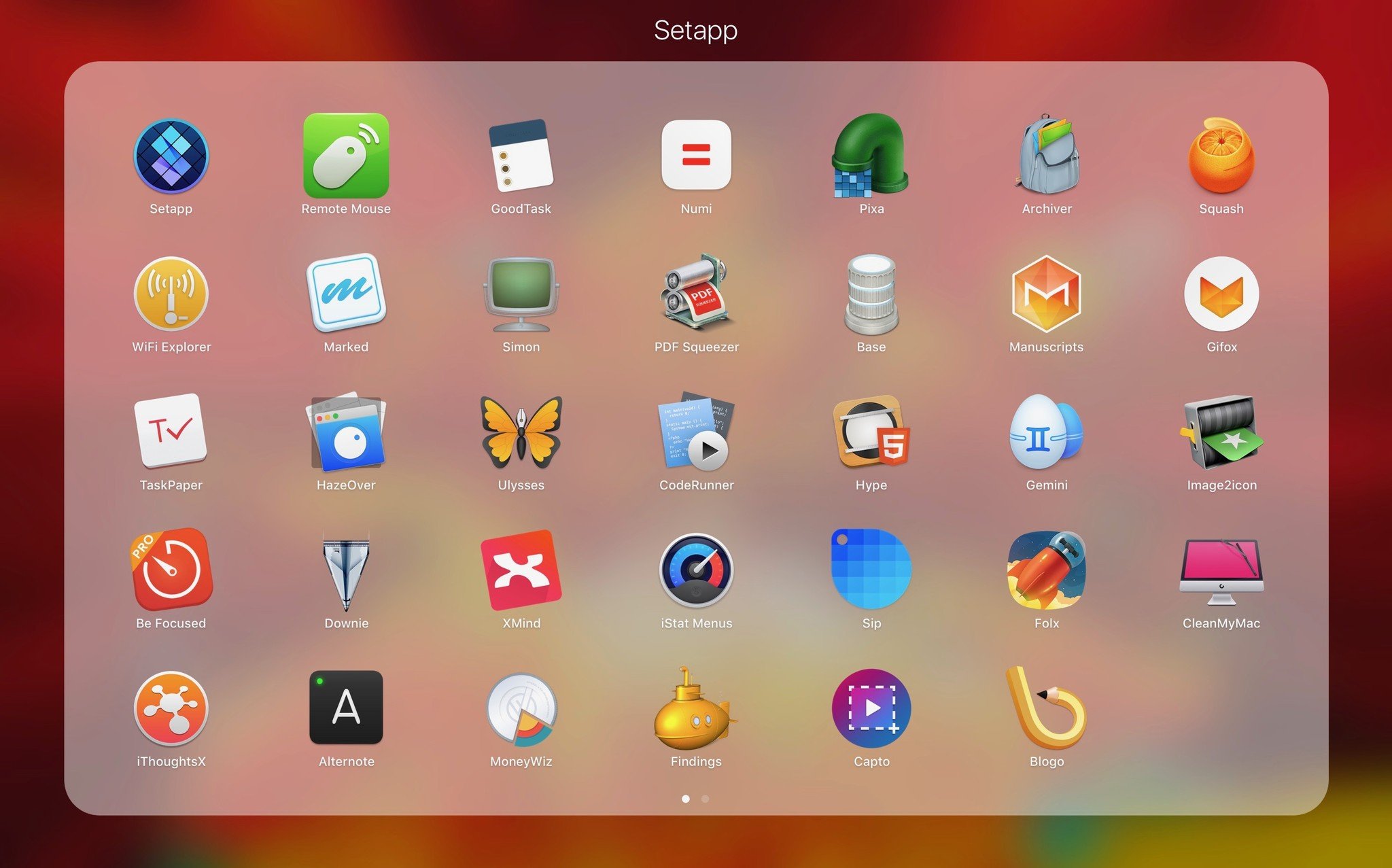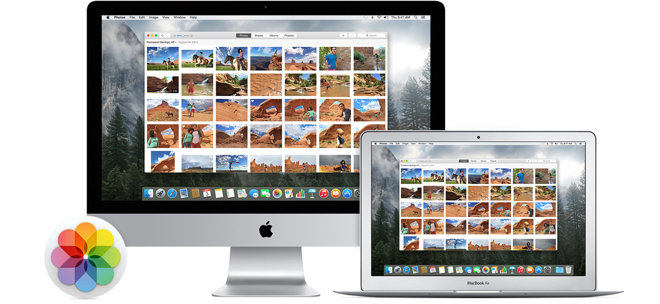'I wanted to import photos from iPhone to Mac via iPhoto, but only to find that it didn’t work. Is there any effective solutions I can try?'
'I tried to transfer photos from my iPhone to my Mac to free up my iPhone space. But iPhoto won’t import photos from my iPhone successfully. What should I do?'
According to iPhone users, many of them have encountered the issue Can't Import Photos from iPhone to Mac when they tried to transfer photos from iPhone to iMac or MacBook. Luckily, in addition to using the built-in features like iPhoto or Photo App on your Mac to import photos from iPhone, there are other completely FREE methods to get things done, which will be introduced in Part 1. Besides, if you insist on import photos from iPhone to iPhoto, you can learn how to fix the issue iPhoto Won't Import Photos from iPhone with the solutions provided in Part 2. (The solutions provided can also be applied to your devices when you can't import videos from iPhone to Mac.)
Part 1: How to import photos from iPhone to Mac for free
There are many other ways you can try to successfully transfer photos from iPhone to Mac without iPhoto or Photos App. But the most practical and useful one is to use the FREE iOS data transfer tool that is compatible with both Mac and Windows PC, EaseUS MobiMover Free. With MobiMover, you can copy files between two iOS devices (iPhone/iPad in iOS 8 or later) and between iOS device and computer. What’s more, MobiMover is also equipped with the file management features that help to manage your iDevice content from computer by deleting, editing or adding items.
Reboot Your iPhone to Fix Crash. In most of the situation, reboot your iOS device can be helpful to.
- Check for App or Mac Updates. As noted earlier, app updates can bring resolutions to app compatibility issues and bugs that lead to MacBook on macOS 10.14 apps crashing. To check for updates to apps that were downloaded from the app store, open the App Store app, and then click the 'Updates', and then search for the updates for the faulty app.
- Organizing photos can be fun when you have a third-party app on your Mac. We have listed some of the best photo management apps for Mac. CyberLink PhotoDirector 365. Cyberlink PhotoDirector 365 is a photo management tool that not only helps you to organize your photos in a neat manner but also provides advanced editing tools.
Photos: Camera Roll, Photo Library, Photo Stream, Photo Videos
Videos: Movies, TV shows, Music Videos


Audios: Music, Ringtones, Voice Memos, Audiobooks
Others: Contacts, Notes, Messages, Voice Mails, Books, and Safari Bookmarks
As you can see from the list above, the files you can import from iPhone are not limited to photos and videos. Besides, with iPhoto or Photos App, you can only import photos from Camera Roll to Mac. While you can transfer all photos in Camera Roll, Photo Stream, and Photo Library from your iPhone to Mac using EaseUS MobiMover. Wonderful, right? Follow the steps below to get things done when you can't import photos or videos from iPhone to Mac with iPhoto/Photos.
Step 1. Connect your iPhone to Mac with a USB cable. Run EaseUS MobiMover, choose 'Phone to Mac' and click the 'Next' button to continue.
Step 2. Check the category/categories you want to copy from your iPhone to Mac. As you can see, you can copy other supported files together with photos from your iPhone to Mac all at once. After that, don't forget to customize the storage path for the exported photos unless you want to save them on your desktop.
Step 3. Now, click the 'Transfer' button to start transferring photos or other files from your iPhone to Mac without iTunes. Exporting files from iPhone to Mac with MobiMover is the right way for backup to avoid unexpected data loss.
For you iPhone users, EaseUS MobiMover Free an unmissable tool when it comes to iOS data transfer and file management. When you get a new iPhone, you will probably need to transfer photos from iPhone to iPhone and sync contacts from iPhone to iPhone, which can be easily done with MobiMover.
Part 2: Fixes to Can't Import Photos from iPhone to Mac
Solution 1: Check your iPhone status
To make the photo transfer from your iPhone to Mac possible, it’s necessary for you to unlock your iPhone when and after you connect your iPhone to Mac and click Trust when the trust messages appear on your iPhone.
Solution 2: Reset Location & Privacy
The effectiveness of this tip has been proven by many users. When you can’t import photos from iPhone to Mac, follow the steps below to reset Location & Privacy and choose Trust when the prompt appears on your iPhone asking you whether to trust this computer or not.
Step 1: Open Settings App on your iPhone.
Step 2: Go to General > Reset >Reset Location & Privacy and click Reset Settings to confirm.
Step 3: Connect your iPhone to your Mac and click Trust on your iPhone.
Step 4: Import photos from iPhone to Mac.
Solution 3: reconnect your iPhone and restart the programs
Disconnect your iPhone from your Mac, shouting down the programs involved, restart your computer, and then plug your iPhone back in and try to import photos from iPhone to Mac again.
Solution 4: Check for update on your iPhone and Mac
It's possible that the software on your Mac or the operating system of your devices are too old to support the photo transfer and make you can’t import photos from iPhone to Mac. Here is the software you need to update. (This tip is also helpful when you can't import photos from iPhone to Windows PC.)
- Update iTunes to its latest version.
- Update photo-management App (iPhoto, Photos, Image Capture) to its latest version.
- Update iOS operating system on your iPhone by going to Settings >General >Software Update.
Imagine this: you’re working happily on your Mac when the dreaded beach ball of death appears. A program stops responding or worse, the macOS (or OS X) itself refuses to do anything but stare at you, blankly. You have a frozen Mac app or an OS X freeze. Mac OS not responding can lead to lost productivity or even lost work. Let's go over why it happens, what to do when your Mac freezes or when an Mac OS app stops responding, as well as some tips for preventative maintenance.
We’ll go over frozen apps first, so if your whole Mac freezes, you can jump to the part about fixing a frozen Mac.
Fixing a frozen app: Why Mac OS apps freeze
There can be a few reasons why apps freeze on Mac. First, sometimes an app freezes on its own, and sometimes it takes down the whole Mac with it. Here's what could be happening:
- Apps freeze in the background.
This could mean there are some apps running that you didn't open, they opened themselves. Probably, they're featured in your startup items, so they automatically launch when you start your Mac. If this happens repeatedly, you need to check what apps are running in the background and launch with the startup. - Processes freeze in the background.
This one is different from apps. One app may be running multiple processes, also system processes can be running on their own. - Too many apps and processes running.
Same logic as with the previous issue. But the question here is how many is too many? There is no definite answer to this, it very much depends on the hardware capacity of your Mac. You can read how to check it and fix it below. - Mac system is too cluttered with junk to run even simple tasks.
This is fixable, you can get a Mac optimizing app like CleanMyMac X for the job. Run a scan to find and remove the stuff you don't need, and there's a high change your apps will stop freezing after that.
What to do if an app freezes on your Mac
A frozen app becomes unresponsive and brings your work to a halt. In the worst case scenario, it can lead to lost work or a corrupted file. Fortunately, there are several options to try, and most are quite simple. Here’s what you can do when a program freezes on your Mac. First, you need to quit it. Then, if the app keeps freezing when you launch it, try the next options.
How to quit a frozen or unresponsive program
Quitting and then re-starting an app is a good way for Mac OS to handle a crash. You can do this from the OS X Dock or from the Force Quit window. To force-quit an app from the OS Dock, follow these simple steps:
- Click anywhere outside of the program
- Right-click (or Control-click) on the frozen app’s icon in the Dock. A menu appears.
- Hold down the Option key on your keyboard so that Quit in that menu changes to Force Quit.
- Select Force Quit.
That’s it. The app is instantly closed. Re-launch it and try again. If you prefer to work with the Dock hidden — or if the Dock itself is unresponsive — you can simply bring up the Force Quit dialog box to perform the same task.
Here’s how:
- On your Mac’s keyboard, hit the Option, Command and Escape keys simultaneously (alt + ? + esc).
- The Force Quit dialog box appears with a list of running programs.
- Select the frozen app and then click Force Quit.
- The software will stop running and you’re free to re-launch it at this point.
If you’re using a maintenance utility like CleanMyMac X, it has freezes covered. When CleanMyMac spots an unresponsive app, a notification window with a Quit button pops up, so you could force-quit the app without rummaging around in its menu.
CleanMyMac keeps an eye on other performance issues, too, so if you'd like to get alerts like this one when anything goes wrong, download CleanMyMac X for free and give it a try.
How to fix Mac apps that keep freezing
First, check what apps are running in the background and launch with the startup.
To do it go to Settings > Users and Groups > Login items.
Uncheck anything you think might be causing trouble. In fact, just to be sure, uncheck every app and restart your Mac.
My Mac Keeps Crashing
Now, find out which process or program is causing the problem. How to see what programs are running on Mac in general? You need launch Activity monitor.
How to find Activity Monitor on Mac: You can do it via the Spotlight Search or just open Launchpad and type it in.
How to open Activity Monitor in Finder: launch it from Applications > Utilities folder > Activity Monitor.
When it opens, you'll probably see hundreds of processes in each tab, but the ones you need now are CPU and Memory tabs. Click on the % CPU sign to sort processes by their influence on your Mac's work. The heaviest ones will show up on the top. They could be your main issue, but don’t rush to deal with them. Some, like kernel, are important system processes and you shouldn’t mess with them.
How to kill a process on Mac OS
However, sometimes your problem does lie within a specific process, you can force quit it (Apple doesn't call it 'to kill a process on Mac', they make it sound fancy). But we're not at Apple HQ, so here's how to kill a Mac OS process:
Mac Photo App Crashing
- Open Activity Monitor.
- You see a list of processes. You can sort them by clicking on %CPU or % Memory in relevant tabs.
- Find the process you want to kill and choose it.
- Click on the octagon with an X sign.
- Done.
Occasionally the problem isn’t with the Mac app, but with the Mac OS itself. If you’re experiencing troubles regularly, it’s time to ask why your Mac keeps freezing. There are several possible reasons, so let’s start with the simplest potential solution.
Microsoft Apps Crashing
First, the file you were working with at the time of the freeze may be the issue. To help determine if this is true, try opening a different file with that app and work with it for a while. If it behaves normally, quit and then go back to the file you were working with at the time of the crash. If the errant behavior persists, you may have found your problem. Salvage what you can into a new file.
Make sure that your software and OS X are up-to-date. This is easy to do with software purchased from the Mac App Store. The same goes for OS X. Launch the Mac App Store on your Mac, and you’ll see the list of pending updates, including any for the OS X itself. For third-party software purchased outside of the App Store, visit the manufacturer’s website.
What to do if Mac OS X freezes
If you cannot force-quit a program, or if the Mac OS is completely unresponsive, it’s time for the most obvious action — a reboot.
You can bring up the Restart/Sleep/Shutdown dialog box instantly by hitting Control plus the Power button. Option four, Shut Down, is selected by default.
Alternatively, you can press and hold the Power button for 1.5-2 seconds to bring up the same dialog box. If things aren’t hopelessly messed up, you’ll get a chance to save your work before your Mac shuts down. If that still doesn’t work, a more drastic option is available.
How to force reboot a frozen Mac
Press Command ?, Control and Power (on earlier MacBook models, use the Media Eject key instead of the Power button) to restart your Mac immediately. Note that you won’t have the option of saving anything in this scenario, but it will definitely reboot your icy Mac.

Once your Mac has restarted, you might find that the hard restart has corrupted the file you were working on. Salvage what you can from it and create a new file.
How to fix a frozen Mac
After the reboot, ensure that your Mac has enough free hard drive space for the OS X, and enough free RAM to do what you want. CleanMyMac X can help you here, too. It removes all the useless files that take up space on your hard drive: app leftovers, mail attachments, cache files, and so on. That way, you can free up additional disk space for the OS X without deleting any of your own files. Plus, CleanMyMac X keeps tabs on how much RAM you’re using and lets you free some up with a tap.
Finally, if system cleanup also fails to fix the problem, you can try to run a clean install of your Mac OS. Just follow the instructions: How to clean install macOS Sierra 10.12
Photos App Crashing Windows 10
Note: If you don’t know which system your Mac runs, click the apple icon in the top left corner and choose About this Mac. You’ll see the name on the popup window.
Mac Photos Crashing
That’s it, we hope this guide has helped you fix a frozen Mac. Remember, with day-to-day maintenance, your Mac can offer years of reliable work. On the rare occasion of a frozen program or even frozen OS X, these tips will help get you working and productive again. And software like CleanMyMac X can do some of the monitoring and maintenance for you, so you can focus on what needs to be done.